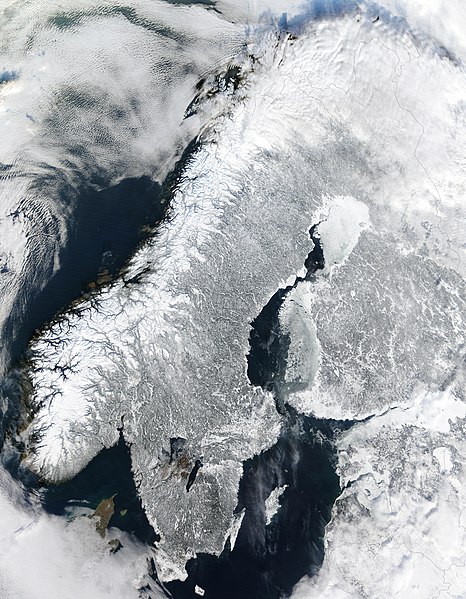File:Scandinavia.TMO2003050.jpg
Appearance

Size of this preview: 466 × 599 pixels. Other resolutions: 187 × 240 pixels | 373 × 480 pixels | 597 × 768 pixels | 796 × 1,024 pixels | 1,593 × 2,048 pixels | 5,600 × 7,200 pixels.
Original file (5,600 × 7,200 pixels, file size: 7.42 MB, MIME type: image/jpeg)
| This is a featured picture, which means that members of the community have identified it as one of the finest images on the English Wikipedia, adding significantly to its accompanying article. If you have a different image of similar quality, be sure to upload it using the proper free license tag, add it to a relevant article, and nominate it. |
| This image was selected as picture of the day on the English Wikipedia for December 21, 2009. |
File history
Click on a date/time to view the file as it appeared at that time.
| Date/Time | Thumbnail | Dimensions | User | Comment | |
|---|---|---|---|---|---|
| current | 03:06, 2 January 2005 |  | 5,600 × 7,200 (7.42 MB) | Ed g2s | larger |
| 00:56, 21 December 2004 |  | 540 × 611 (127 KB) | Mschlindwein | Scandinavia from space in winter |
File usage
The following 24 pages use this file:
- Climate of the Nordic countries
- Empis borealis
- Ice age
- Scandinavian Peninsula
- User:((zwqt))/My Favourite Images
- User:Mark Buchanan/sandbox/Glaciation-WIP
- User:Ninahi8
- User talk:Spencer/Archive 11
- User talk:Spencer/Archive 2
- Wikipedia:Featured picture candidates/January-2009
- Wikipedia:Featured picture candidates/Scandinavia in winter
- Wikipedia:Featured pictures/Space/Looking back
- Wikipedia:Featured pictures thumbs/14
- Wikipedia:Picture of the day/December 2009
- Wikipedia:WikiProject Norway
- Wikipedia:Wikipedia Signpost/2009-01-10/Features and admins
- Wikipedia:Wikipedia Signpost/2009-01-10/SPV
- Wikipedia:Wikipedia Signpost/Single/2009-01-10
- Template:POTD/2009-12-21
- Portal:Finland
- Portal:Finland/Recognized content
- Portal:Geography/Selected picture
- Portal:Norway
- Portal:Norway/Content
Global file usage
The following other wikis use this file:
- Usage on af.wikipedia.org
- Usage on ar.wikipedia.org
- Usage on arz.wikipedia.org
- Usage on ast.wikipedia.org
- Usage on az.wikipedia.org
- Usage on ba.wikipedia.org
- Usage on be.wikipedia.org
- Usage on bg.wikipedia.org
- Usage on bn.wikibooks.org
- Usage on br.wikipedia.org
- Usage on ca.wikipedia.org
- Usage on ceb.wikipedia.org
- Usage on co.wikipedia.org
- Usage on crh.wikipedia.org
- Usage on cs.wikipedia.org
- Usage on da.wikipedia.org
- Usage on de.wikipedia.org
- Schweden
- Skandinavien
- Nordeuropa
- Skandinavische Halbinsel
- Wikipedia:Kandidaten für exzellente Bilder/Archiv2005/6
- Datei:Scandinavia.TMO2003050.jpg
- Portal:Schweden/Qualität
- Benutzer:Torinberl/Testterrain
- Benutzer:Torinberl/Benutzerseite
- Portal:Schweden/Bild der Woche/2007
- Wikipedia:Exzellente Bilder/Karten und Satellitenbilder
- Benutzer:Cristof/Themen3
- Benutzer:Cristof/Themen3/Geographie
- Benutzer:Cristof/Themen3/ConGeographie
- Benutzer:Cristof/Themen3/ Geographie
- Benutzer:Cristof/ Themen3
- Benutzer:Cristof/Themen31
View more global usage of this file.





